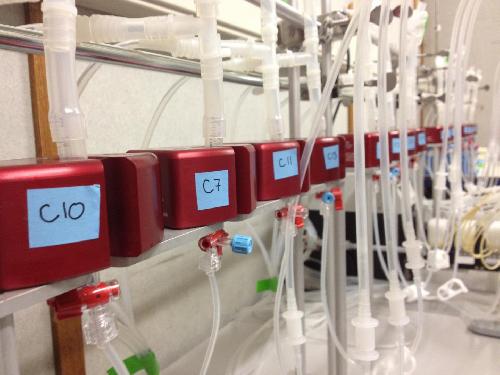An experiment to study aging in yeast cells followed molecular processes inside and discovered that an overproduction of the proteins needed to make new proteins which could be the root cause of the cellular processes that eventually kill the cells.
Baker's yeast is extensively used to study aging. A 'mother cell' can produce some twenty daughters in about four days, following which it dies. But as mothers and daughters are mixed in any yeast culture, it is virtually impossible to follow the aging process in great detail.
To avoid that, the team coupled iron beads to yeast cells that were cultured on a stainless steel mesh in a column positioned inside a strong magnet. As budding daughter cells do not inherit the iron beads, they can be washed away by a constant flow of medium through the column. By taking regular samples from the yeast cells in the columns, the researchers were able to obtain a dynamic view of the ageing process.

They analyzed samples for a large number of proteins, as well as transcripts. Transcripts are a kind of copy of the genes encoded on the DNA, which are used as a template for the production of proteins. Typically, the number of transcripts correlates with the amount of protein produced. As cells aged this correlation disappeared for a specific set of proteins - the yeast cells displayed a higher than expected number of ribosomal proteins, which make up the protein factories of the cell.
This protein overabundance can be bad for the cells. It increases cell size, which is one of the hallmarks of ageing in yeast. Increased cell size can limit the cells' nutrient supply and affect metabolism.
Ribosomal proteins
So why does this happen? "Our idea is that the increased production of ribosomal proteins is good for young cells," says Dr. Liesbeth Veenhoff of the European Research Institute for the Biology of Ageing. "It allows them to grow and mature quickly. But this growth programme somehow keeps running and eventually becomes a negative factor."
Interestingly, known interventions that increase longevity, such as caloric restriction, probably reduce protein production.






Comments